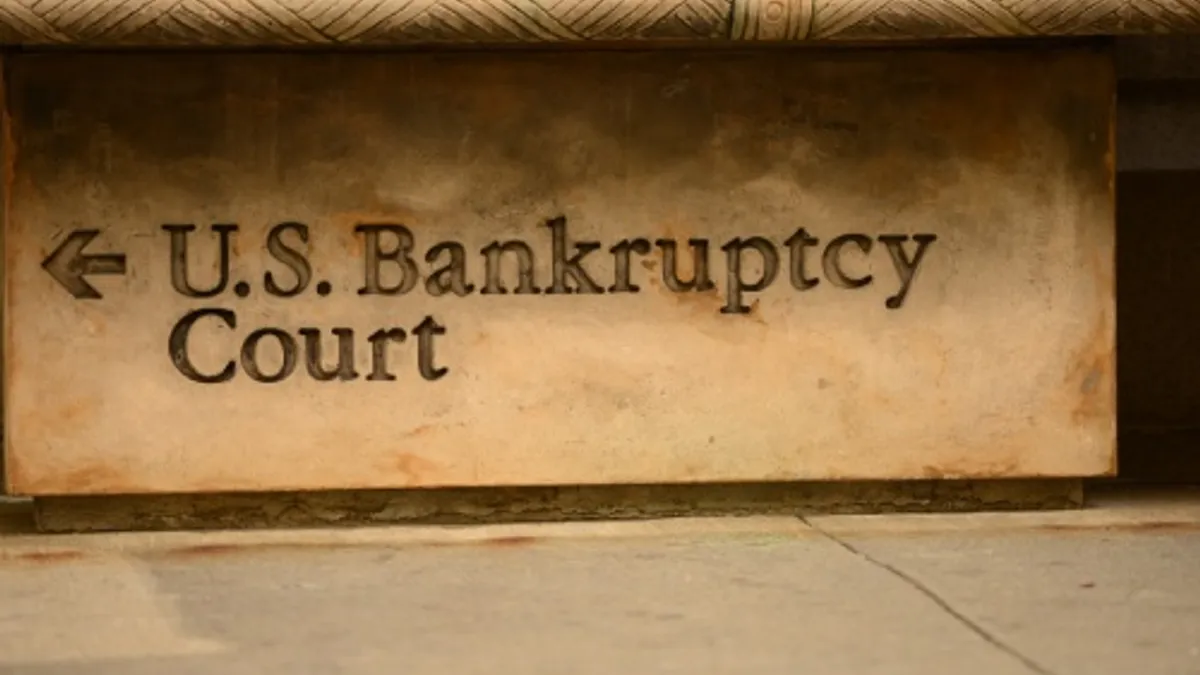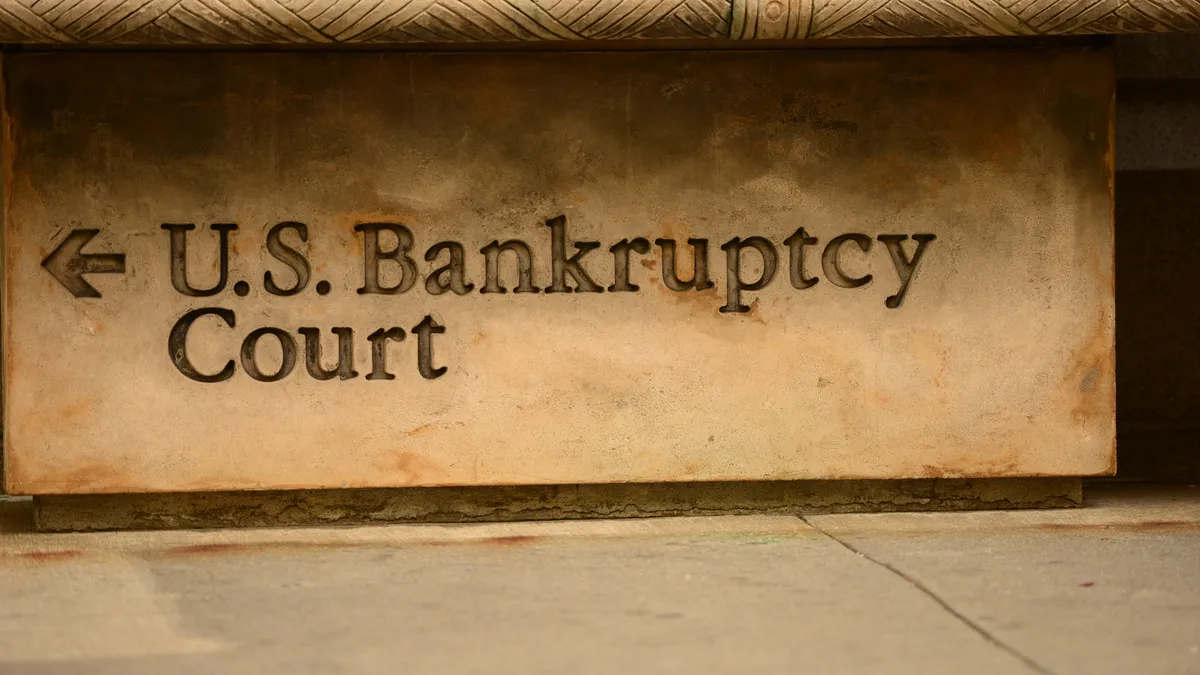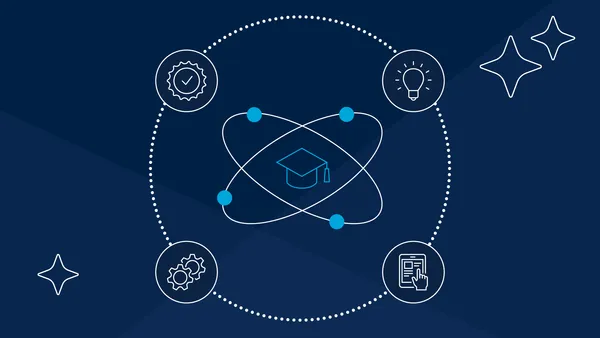Higher education often gets criticized for its silos, both within institutions and among them. So when the University Innovation Alliance (UIA) launched five years ago, its bold ambition of getting universities to share ideas to help them improve college access was met with skepticism.
"This has been a fairly intractable space where every institution is doing really interesting experiments, and everybody has a narrative," Bridget Burns, UIA's executive director, told attendees at the Educause conference in Chicago last month. "(But) the diffusion of innovation is glacial, and most people are not very aware of what's going on, and most people struggle with actually how to fix it."
After all, what could one public research university — in its own world of state funding, geographic enrollment trends and institution-specific growth plans — do that another could effectively implement?
A lot, it turns out. By examining and rethinking areas of the institution that could be improved with better data, more information-sharing and, in some cases, the help of technology, the UIA schools are on track to graduate an additional 94,000 students by 2025. That's ahead of their initial mark of 68,000 additional students.
The group of 11 institutions comprises Arizona State, Georgia State, Iowa State, Michigan State, Ohio State, Oregon State and Purdue universities, as well as the University of California, Riverside, the University of Central Florida, the University of Kansas and the University of Texas at Austin.
Together, they have examined how to collect and use data to spot students who are falling behind or may soon be — a process implemented increasingly across higher ed, though not without some criticism. Other areas of focus for UIA include redesigning the link between higher ed, career services and employers, and exploring how chatbots can be used on campuses. How colleges can become more user-friendly for adult learners is also expected to be on the table.
Through it all, the campuses have shared lessons while still approaching the issues with the unique needs of their own institutions in mind. "We know that a cookie-cutter approach is a bad idea," Burns told Education Dive earlier this year.
Education Dive sat down with Burns last month in Washington, D.C., to talk more about what UIA has learned about collaborations among universities, and how those lessons can be applied in other consortia and within institutions of all sizes.
This interview has been edited and condensed.
EDUCATION DIVE: Predictive analytics was UIA's first project. Was that by design?
BURNS: We needed a scoreboard to know if our work was making a difference. If you haven't done the work to identify your indicators, and you haven't synced your data system, then you're dealing with very obtuse metrics that aren't always helpful.
We've reported on some of the challenges UIA schools faced in that process, one of which was that many first needed to map their processes and data internally. Did you expect that to be a challenge?
BURNS: I had no idea what the challenges were going to be. It's like anything where you take on a new skill or ability, in that you don't actually know what your gaps are, and you can't focus on those because you wouldn't probably start. Those were critical in moving forward.
Where were you starting from?
BURNS: We had an example of an institution that had figured something out and was showing some impressive capacity and capability that other campuses wanted. Initially, we framed it as there were mentors and mentees, but we walked away from that language because nobody wants to be called a mentee. We actually found in some cases we were learning more from those in the mentee role than we were from the mentor.
How so?
BURNS: Quickly, we learned that nobody wants to just emulate one institution. What we were trying to pursue was: What lessons could you learn from collective scale, what could you sift through all these different experiences and pull out as the gold?
You've said that required building trust among UIA schools. How did that happen, and what can colleges and universities looking to build trust internally learn from that?
BURNS: Initially, I traveled to each campus and interviewed people about what was going wrong, what was hard, what was getting in the way. After about five of those it was so clear: Every campus had the same problems, but none of them realized it.
In most collaborations, it's not just about what can we do together. It's about what problem can we solve together that I simply cannot handle on my own. In this case, that was around overwhelm and not really understanding what the first steps are. A lot of how institutions share involves elevating examples of work in such a high fashion that people talk about what was achieved and not about the questions they couldn't answer, or asking the dumb question, or figuring out what's the first step. Those are the things people want to talk about.
The first priority in building a collaboration is figuring out how to create the conditions for a truly candid conversation about shared struggles.
Is higher ed different from any other industry in that way?
BURNS: I don't think they are truly unique problems, but unlike other sectors, we really do somehow believe we are competing with every single other university or college, even if we are not in the same space. Part of it is the general sense of scarcity that's communicated through media, state budgets, who gets elevated as the innovator.
Another part of it is that it is not very common — or not as common as it should be — to have worked at multiple universities due to geographic constraints. Every university has a story about why they do what they do, and if you see enough of those stories, you can see them for what they are. But if you work at one or two institutions, maybe three, maybe you're not picking up that these are sector-wide problems and we shouldn't be pushing this up a hill.
What can smaller colleges that don't have the internal economies of scale of UIA schools learn from that work?
BURNS: I don't think UIA's lessons have been about the number of students we serve. They've been about fairly typical universities struggling with fairly typical challenges but going about it unusually. On the data front, in particular, the lessons we gathered carry for any size of campus. Your first job is to identify the top 10 indicators that a student is about to drop out. That seems simple, but the vast majority of campuses don't know the answer to that question, and it should keep them up at night.
Small colleges should team up with other small colleges. What problems do you have at your institution that are consistent and you haven't been able to solve? Find others struggling with those same problems and set up a conversation that allows you to solve it together.
You said during a talk at Educause last month that "everyone has massive, million-dollar failures on their campus" that don't get discussed. UIA schools seem to have figured out a way to talk about some of that. What can other colleges learn from their approach?
BURNS: Most of the time, I have a hard time getting institutions to acknowledge that something didn't work out. It's about creating a space where there's something else there instead of it just being the word 'failure.' I’m still looking for exceptional examples of the implementation of autopsy processes inside a campus.
And it depends on where you sit. Some presidents tell me they have a great process, but then I talk to people on their team who will say, "I don't know what they're talking about." It's possible that isn't actually a failure. It's possible it's about leadership communication and that people don't understand what the actual goal is. It's also possible that people on that campus don't understand the perspective of the leader and don't see the bigger picture.
In general, I would say it is worth leaning in because that demonstrates there is a need for greater understanding
What's next for UIA?
BURNS: We are on the precipice of making some very big decisions and, soon, announcements about how other institutions can be part of this. The driving question for us at the moment is: How do we make sure this work has the level of impact it should in support of the rest of higher education? And how do we sustain it?
People didn't expect this to work, but it's working at a high degree, and we feel somewhat selfish that this is happening only for a group of 11 institutions.





















